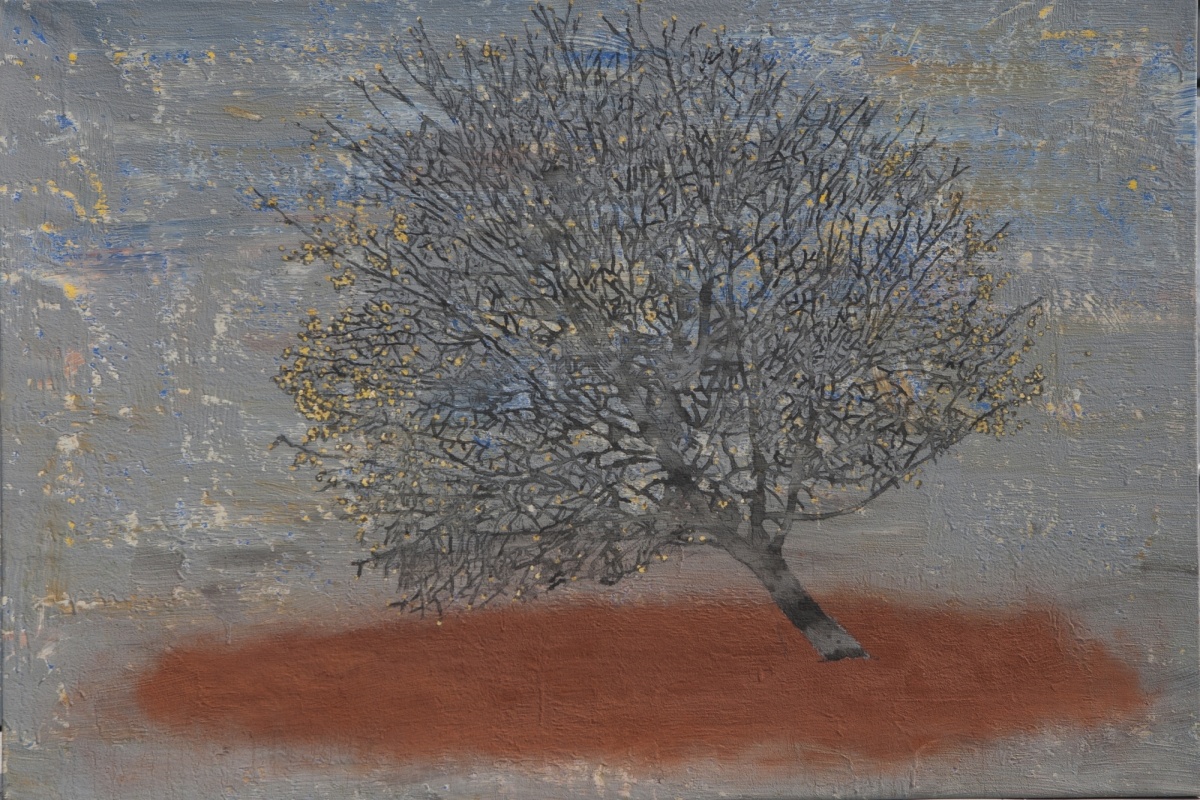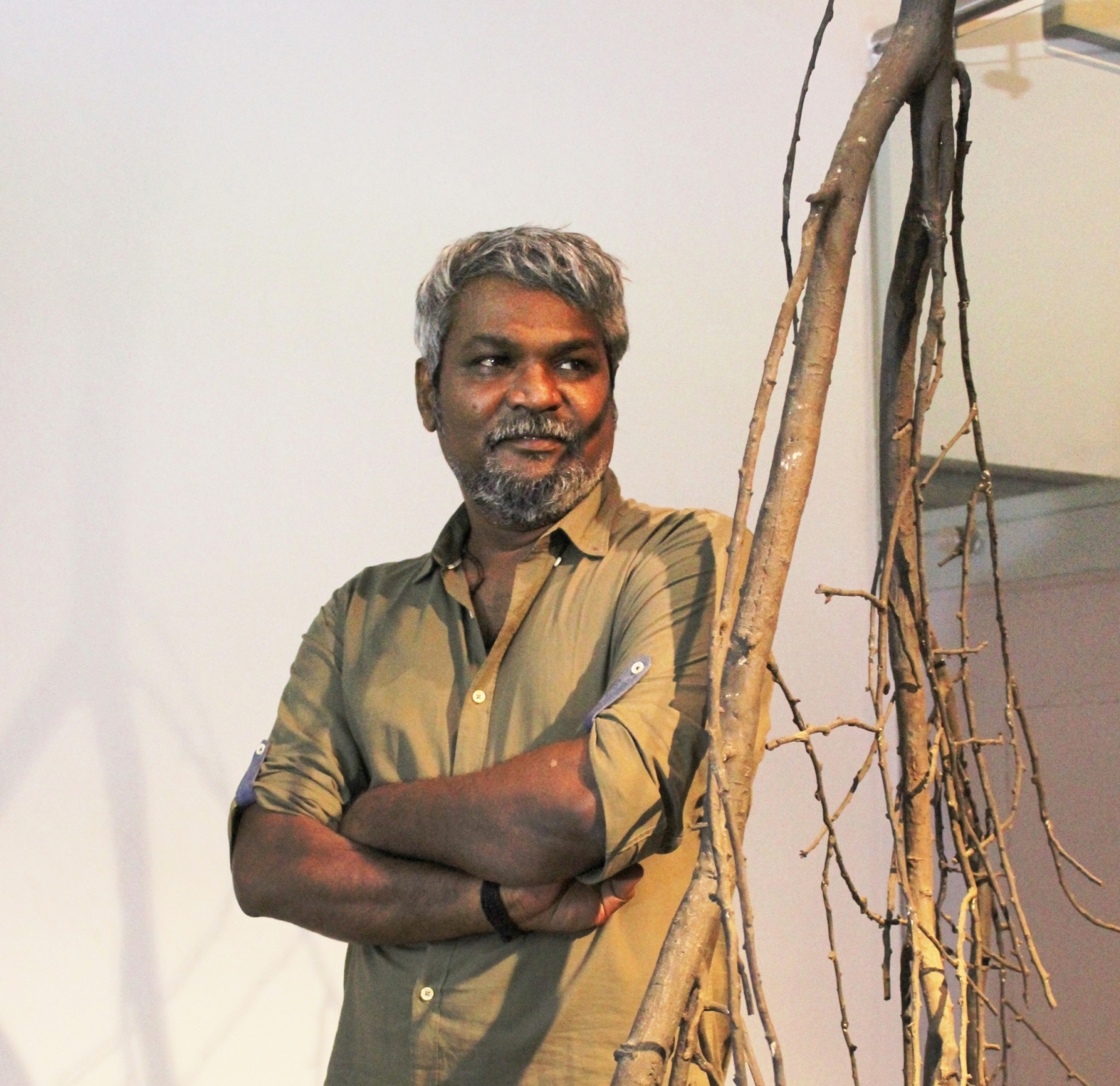Artist Divyaman Singh impresses with latest outing of ‘Divine Elements’
The exhibition was curated by Shahzada Khurram and was displayed at the India Habitat Centre from July 2 to 8.
“I derive pleasure from both. Some ideas are two-dimensional while others demand a three-dimensional approach. So, at the end of the day, it all comes down to the demands of the particular idea.”

The constant phoenix - GR Iranna.
For artist GR Iranna, ash represents the parallels between life and death.
“My affair with it can be traced right back to my childhood days. I did my schooling at an aashram where there was a tradition of wearing vibhuti (holy ash) on the foreheads. So, I am not new to the use of ash. Even when I was back in college, I would use materials like black ash and charcoal,” says the artist whose latest exhibition ‘Budi’ (Ash) can be viewed at Gallery Espace.
Overwhelmed by the response to the two month long exhibition that started in February, the artist feels that in unnatural times of the pandemic like this, it is a good idea to extend the duration of an exhibition, so that it can be attended in a staggered manner. “The visitors come in two’s and three’s at a time, and not in large crowds. This is why we chose to hold the exhibition over a longer duration. Also, visitors get to interact more intimately with the artwork,” says Iranna, whose work ‘Naavu’ (We Together) was part of the India Pavilion at the Venice Biennale held in 2019.
Advertisement
With works like ‘Dissolving Tree’, ‘The Fragrance of Invisible Flowers’, ‘The Final Yield’ and bronze sculptures of tree logs and branches on display, the artist stresses that ash is much more than a medium… finding a mention in the Vedas, the Rigvedas, and the Upanishads, among other religious texts. He recalls that a few years ago, it simply occurred to him that ash could also be used in the works to convey multiple meanings.
“So, I explore this material as a form of self-realisation. To hold a mirror to the society. Throughout the history of mankind, the world has witnessed wars — in the name of national pride, religion, defence of the kingdom etc. Eventually, we will all turn into dust anyway, so what is the point of killing one another?”
Talk about the ‘tree’ being an integral part of his work in the exhibition, and his encounter with the Tree of Tule in Mexico a decade back, and he remembers that it had a very stout trunk, and had been standing tall for thousands of years. “I was spellbound. You come to think of it. It has witnessed entire generations of mankind come and go. The tree bears testimony to the many wars fought, the several generations that have passed and the rise and fall of kingdoms. So, in my works, I use the tree as a metaphor for a witness.”
For someone who paints and sculpts, the choice of medium depends on the idea. “I derive pleasure from both. Some ideas are two-dimensional while others demand a three-dimensional approach. So, at the end of the day, it all comes down to the demands of the particular idea.”
Attributing his agricultural background to the constant dialogue about the working class and farmers in his works, the artist says, “My father is a farmer. As a child, I would often offer a helping hand to the labourers working in the fields. Back in those days, we did not have a television, a mobile phone or any access to the Internet. I would breathe in the smell of the mud, and play with water. Well, kids these days do not get to experience that. If I wanted to play with a toy, I would have to sculpt it on my own with the use of clay and other materials available at hand.”

Adding that he is not the kind of artist who can rustle up a work every time a protest breaks out, Iranna, recipient of the National Academy Award by Lalit Kala Alademi in 1997, smiles, “Every artist has his own process goes about it in his own way. As an artist, I need to conceive an idea first. You cannot push yourself into doing it. It has to come from within. It happens. But I am sure some artists can manage to do that.”
Currently on a lookout for new artistic dimensions he can add to his ash work, Iranna says that of late, he is finding himself drawn to poetry, enjoying works of Allama Prabhu and Akka Mahadevi.
Also a fan of Indian classical music from which he says he derives many ideas — “rhythms can bring some beautiful imagery to the mind”, the artist feels that there is something special about theatre which he can never get enough of. “There is a peculiar combination of stillness and activity in that art form. I try to capture those multiple dimensions and elements in my works. Girish Karnad, for instance, also used the elements in the theatre that I am always looking to incorporate in my paintings and sculptures. In many ways, I derive inspiration from all different art forms, be it music, or poetry,” concludes the artist.
Advertisement